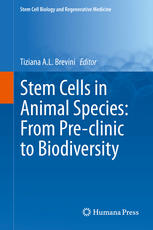

Most ebook files are in PDF format, so you can easily read them using various software such as Foxit Reader or directly on the Google Chrome browser.
Some ebook files are released by publishers in other formats such as .awz, .mobi, .epub, .fb2, etc. You may need to install specific software to read these formats on mobile/PC, such as Calibre.
Please read the tutorial at this link: https://ebookbell.com/faq
We offer FREE conversion to the popular formats you request; however, this may take some time. Therefore, right after payment, please email us, and we will try to provide the service as quickly as possible.
For some exceptional file formats or broken links (if any), please refrain from opening any disputes. Instead, email us first, and we will try to assist within a maximum of 6 hours.
EbookBell Team

4.1
30 reviewsThis volume focuses on stem cell research and disease modeling in non-murine species. The book is divided into three parts: Stem Cells for Pre-Clinical Models, Stem Cells in Non-Conventional Species, and Stem Cell Banking for the Future. The first section presents an overview of the different pre-clinical stem cell models recently created in animal species, including the porcine model for heart failure, iPSC in large animal species, Duchenne muscular dystrophy and canine embryo-derived stem cells and modeling for human diseases. This section also discusses the potential advantages and applications of these models.
The second part of this book describes recent efforts to use stem cells for preserving endangered species, including the snow leopard and coral reefs. From this perspective, stem cells are an invaluable tool to preserve bio-diversities. Frozen cells and gametes can be obtained from animals at risk of extinction and even from microorganisms and corals suffering from heavy changes in the eco-system; this may allow the cultivation of a generation of stem cell lines and represents an exciting opportunity to support and ensure the conservation of precious varieties of living creatures. This discussion leads easily into the third section, which discusses stem cell banking as a way of safeguarding these endangered species.